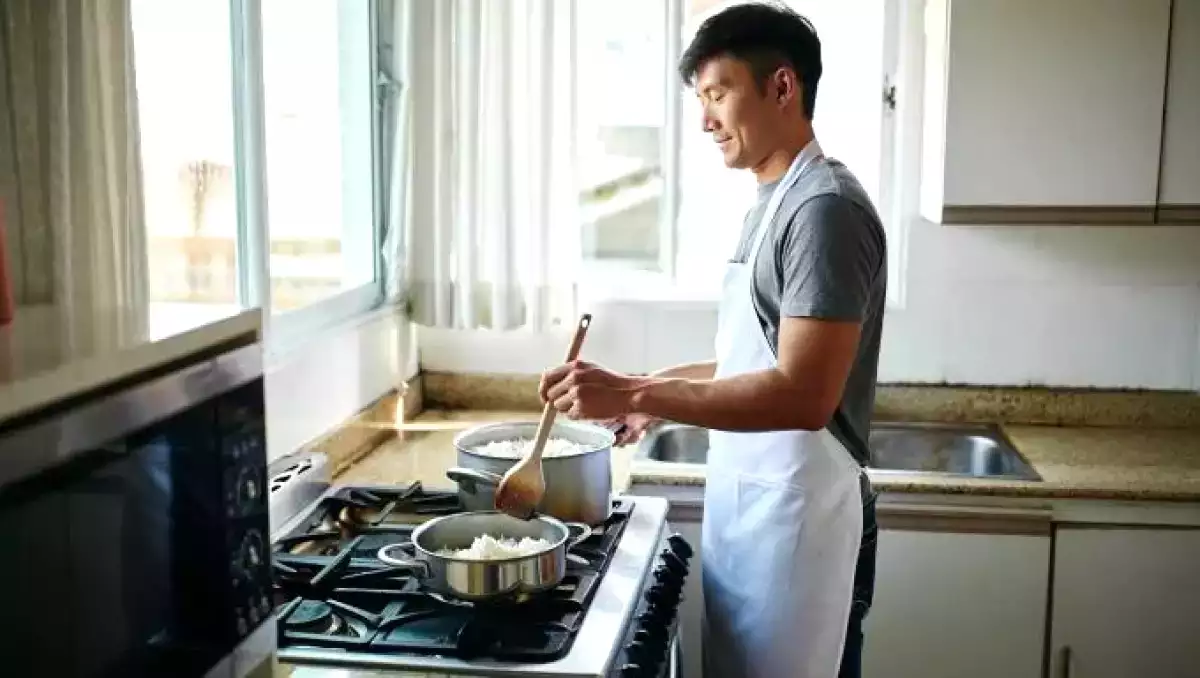The Asian method for cooking rice without error: simple, precise and foolproof

When it comes to cooking rice perfectly, no one knows more about it than Asia. In countries like Japan, China and Korea, rice goes far beyond a simple side dish - it's a central part of their culture, tradition and even their philosophy of life.
But did you know that their secret doesn't lie in expensive utensils or fancy recipes, but in a simple, precise and infallible ancient method? Find out now how to cook rice perfectly every time, without the need for complicated measurements.
The secret is in the finger: The "water level method" technique
While in the West we usually use cups and spoons to measure rice and water, in Asia there is a much more practical - and surprisingly effective - technique.
Here's how it works:
- Rinse the rice until the water runs clear: This removes excess starch and prevents the rice from becoming soggy.
- Place the rice in the pot (preferably with a glass or heavy lid): Spread the rice out evenly.
- Add water until it covers the rice and continue filling to the level of the first phalanx of the index finger: Place your finger on the rice (without sinking to the bottom of the pot) and add water until it reaches the first line of the finger's fold.
This method works regardless of the amount of rice! A handful or a full pot: the ratio of rice to water balances itself out.
The Asian cooking technique
In addition to measuring with your finger, the cooking process also follows a precise sequence:
- High heat until boiling (with lid half open).
- As soon as it boils, turn the heat down to minimum and cover completely.
- Cook for about 10 to 12 minutes without stirring.
- Turn off the heat and leave to rest for 10 minutes with the lid closed.
This time is essential: the rice finishes cooking in its own steam and becomes soft and loose.
Extra tips for perfect rice
- Use thick-bottomed or iron pans: they distribute the heat better and avoid burning the bottom.
- Never stir the rice during cooking. This breaks down the grains and releases starch.
- Want a Japanese touch? Add a strip of kombu seaweed to the water for a discreet umami flavor.
- For a crispy Korean version: leave the rice on a low heat for longer and enjoy the "nurungji" - golden crust on the bottom of the pan.
Why does it work?
This ancient method isn't superstition - it's physics and moisture balance in practice. By relying on the height of the water over the rice rather than rigid measurements, you guarantee ideal proportions without relying on recipes. It's a technique that has been passed down from generation to generation because it simply works.
Now that you know
If you've ever been frustrated by soggy, raw or sticky rice, try the oriental method. It requires no experience, just attention and respect for the process. It's a lesson in simplicity and precision.
Next time you're cooking rice, forget the ruler or measuring cup - all you need is your finger and a little patience.
 Mirella Mendonça
Mirella Mendonça
Comments